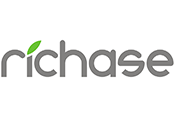What are the common trace element fertilizers and how to use them?
Trace elements are indispensable nutrients during the growth of crops and play a key role in the growth of crops.
Boron fertilizer can be used as base fertilizer, top dressing and seed fertilizer.
When making basal fertilizer, it can be used in combination with nitrogen and phosphate fertilizers, or it can be used alone. Generally, 0.25 to 0.5 kg of boric acid or borax is applied per mu, and the application must be even to prevent excessive concentration and poisoning.
Topdressing usually adopts the method of extra-root topdressing, spraying borax or boric acid solution with a concentration of 0.1% to 0.2%, the dosage is 50 kg to 75 kg per mu, sprayed once at the seedling stage and when the vegetative growth is transferred to the reproductive growth. .
Seed fertilizer often adopts the method of soaking and dressing seeds. Soak the seeds with a boric acid or borax solution with a concentration of 0.01% to 0.1%, soak for 6 to 12 hours, and then sow the seeds after drying in the shade.
A 0.01%~0.03% solution can be used for cereals and vegetables, and a 0.1% solution can be used for rice. When dressing seeds, use 0.2~0.5 grams of borax or boric acid per kilogram of seeds.
2. Ferrous fertilizer
The most commonly used Ferrou fertilizer in production is ferrous sulfate. At present, extra-root topdressing is mostly used, and the spray concentration is 0.2% to 1%.
Fruit trees usually spray 0.75%~1% EDTA iron before germination or spray 0.5% EDTA iron plus 0.5% high-nitrogen water-soluble fertilizer three times after seeing yellow leaves. You can also mix EDTA iron with organic fertilizer in a ratio of 1:10-20 and apply it under the fruit trees. Each plant is 50 kilograms, and the fertilizer effect can reach one year, so that 70% of iron deficiency can become green.
The high-pressure injection method is also an effective iron application method for fruit trees, that is, 0.3%~0.5% EDTA iron solution is directly injected into the xylem of the trunk, and then transported to the required part along with the sap flow.
Copper fertilizer can be used as base fertilizer, top dressing and seed treatment.
The dosage of base fertilizer is 1~1.5kg copper sulfate per mu. Due to the long validity period of copper fertilizer, in order to prevent the poisonous effect of copper, it is advisable to apply it once every 3~5 years.
Top dressing is usually based on top dressing outside the roots, with a spray concentration of 0.02%~0.04%, 0.2%~0.4% for fruit trees, and 10%~20% potassium dihydrogen phosphate with EDTA copper dosage to prevent phytotoxicity. The dosage of copper sulfate dressing is 0.3~0.6g per kilogram of seeds, and the concentration of soaking seeds is 0.01%~0.05%.
Zinc fertilizer can be used as base fertilizer, top dressing and seed fertilizer. Usually insoluble zinc fertilizer is used as the base fertilizer. When making the base fertilizer, apply 1~2 kg of zinc sulfate per mu, which can be mixed with physiological acid fertilizers. The application should be repeated every 1 to 2 years on the mild zinc-deficient plots, and the application should be reduced every other year or the following year for the moderate zinc-deficient plots.
When making top dressing, the root top dressing is often used. Generally, crops are sprayed with a zinc sugar alcohol solution with a concentration of 0.02%~0.1%, and the spray concentration of corn and rice is 0.1%~0.5%. Spray a 0.2% zinc sugar alcohol solution on rice at the tillering, booting, and flowering stages; fruit trees can be sprayed with 5% zinc sugar alcohol one month before germination, and the aftermath of germination should be painted with 3% to 4% solution.
Seed fertilizers often use the method of soaking or dressing. The concentration of soaking is 0.02%~0.1%, soaking the seeds for 12 hours, and sowing after drying in the shade. For seed dressing, use 2-6 grams of zinc sulfate per kilogram of seeds, and 2 to 4 grams of corn can be used.


